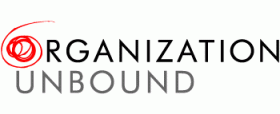-
 I once worked at an advocacy and training organization where, in an effort to look more professional in the eyes of our funders and partners, it was decided that all correspondence would have a uniform look- even down to the font that we used in our emails. I could handle the idea of uniformity for the occasional letter, but something about putting such a restriction on everyday emails really bothered me. It felt akin to requiring us to adopt a standard accent when talking on the phone. Eventually, I decided to revert back to the old Times Roman in silent protest.
I once worked at an advocacy and training organization where, in an effort to look more professional in the eyes of our funders and partners, it was decided that all correspondence would have a uniform look- even down to the font that we used in our emails. I could handle the idea of uniformity for the occasional letter, but something about putting such a restriction on everyday emails really bothered me. It felt akin to requiring us to adopt a standard accent when talking on the phone. Eventually, I decided to revert back to the old Times Roman in silent protest.Years later, during my first week teaching at a large university, I took a break from course preparations to make a hand-crafted sign for my office door- nothing special, just a little something to display my office hours and to make my corner of the nondescript hallway a little more colorful and human. To my surprise, when I returned the following day, my sign had somehow transformed itself into a black & white computer-generated printout. I was confused. Later in the day I received an email from one of the administrative support staff explaining that she had made me a proper sign when she saw that I had resorted to making one by hand. She clearly meant this as a kindness, never imagining that a member of the staff might actually prefer to have a more personal, handcrafted sign on their door.
On the surface, something like font style or the look of a sign might seem trivial, but over time these tiny crossroads where human and organizational voices meet play an important role in connecting us to our work and in helping to create more authentic organizations.
The most vibrant organizations I’ve experienced see their staff, volunteers, clients, and members as co-creators of a richly-layered and ever-evolving organizational identity, rather than conformers (or potential disrupters) of a single carefully-crafted identity that must be preserved. I’m reminded of my friend Marc Nisbet’s experience as a staff member of Santropol Roulant, where he felt that people were free to express the organization in their own authentic and personalized ways, even when representing the organization more publicly at a policy level:
Typically when you’re doing advocacy work, you’re working for the organization. It’s not really about you. It’s about doing charity work for someone else…Whereas at Santropol Roulant I felt really free, because you’re speaking about the organization on behalf of your experience, and that’s a legitimate part of the mission. So you can always be your own case study in your work. You don’t need permission…It’s healthy for me to be part of this community the same way it’s healthy for our seniors, meal-service members, board members, and funders to be part of this community. Whatever we say is all right. When we are asked to contribute to something like a project table or board, it’s typically framed as, ‘You guys can be the lead on meal services or community sectors.’ But from our perspective, it’s actually like, ‘How about I come as Marc, who has been working at Santropol Roulant and who has also volunteered there.’…We are never really going to speak on behalf of the membership. It’s our experience within the organization that we’re going to bring.
What Marc’s reflections highlight for me is that an organization is a living thing shaped through the experiences of everyone who interacts with it. When we compress or exclude these experiences, the organization’s voice becomes thin and generic. When voice is more widely distributed, on the other hand, a fuller and more genuine version of the organization is expressed. You would think that this would lead to fragmentation and incoherence, but the organizations I know that work in this way have beautifully multi-layered identities that feel deeply coherent.
Distributed voice




3 Responses and Counting...
Tana, I agree with this blog. After working on so many large scale projects as a landscape architect/ land planner, I have always had a problem with the sameness and professional look that was expected by the development requirements and the clients. You may remember that when I first visited Columbia MD my reaction was, “My gosh, they got it all right, but why don’t I want to live here?” As you know i’ve typically gravitated to Chinatown, small villages and unique, usually old communities because they were not designed but grew , mostly organically like an old Italian hilltown.
Hi Jim! I love the idea of using the architectural image of an old Italian hilltown to describe a healthy organization. It’s funny how different on the surface, but similar at the root, our work paths/are. So happy to see you here! Love, Tana
Tana, just coming out of a Berkana board meeting where we are very much immersed in these very questions of voice and brand. I would love to be in further conversation with you on this subject an ANY point and via any medium. The Roulant is also a very interesting case study because there is coherence to the organization – it is all very grounded in the mission of their work. I need to chew on these thoughts a little more for sure! Thanks for the good fodder! Aerin.